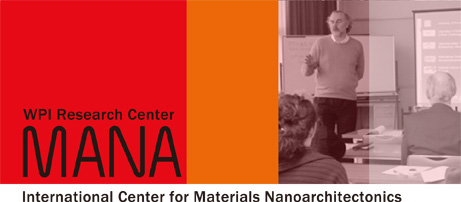Masanori Kohno

- Affiliation:
- Nano-System Organization Unit, Nano-System Organization Group
- Specialty:
- Condensed Matter Physics
- Academic degree:
- Ph.D., University of Tokyo
- Recent publications
- See NIMS Researchers DB
- Home Page:
- See Personal Website
Educational and Working History
| 2006 | - | Present | Senior Researcher, National Institute for Materials Sciencee (NIMS) |
| 2006 | - | 2007 | Visiting Researcher, University of California, Santa Barbara |
| 2003 | Researcher, NIMS | ||
| 1998 | Researcher, Mitsubishi Research Institute, Inc. | ||
| 1998 | Ph.D., University of Tokyo |
Research Interests
Fractional excitations in frustrated magnets in two-dimensions
He resolved a long-standing puzzle on the dynamical properties in frustrated two-dimensional antiferromagnet Cs2CuCl4 in terms of fractional excitations in collaboration with L. Balents and O. A. Starykh. Through this work, he showed that descendants of one-dimensional fractional excitations strongly persist in spatially anisotropic frustrated antiferromagnets, which provides a partial answer to the fundamental question in modern condensed matter physics on fractionalization in two dimensions in the absence of magnetic field.
Numerical simulations for spin systems and electronic systems
He applied large-scale quantum Monte Carlo techniques to various kinds of spin systems, and quantitatively explained a variety of magnetic properties in real materials, such as quantum critical behaviors in one-dimensional organic compounds and magnetic ordering in three-dimensional perovskite materials. Also, he applied numerical techniques to predict unconventional phases in strongly correlated electron systems.
Quantum phenomena caused by strong correlations in low-dimensional systems
He investigated quantum phenomena in strong correlated systems by numerical and analytical techniques. He proved the emergence of a ferromagnetic phase in the Hubbard model on a ladder in an extreme situation, and he confirmed the stability in a wider range of parameters by numerical simulations. Also, he predicted the emergence of superconductivity in strongly correlated electron systems by tuning band structures in collaboration with M. Imada.
Related Link
Selected Papers
- Mott Transition in the Two-Dimensional Hubbard Model
- Kohno M
- Phys Rev Lett, 2012; 108(7): 076401.
- Spectral Properties near the Mott Transition in the One-Dimensional Hubbard Model
- Kohno M
- Phys Rev Lett, 2010; 105(10): 106402.
- Quasiparticles of spatially anisotropic triangular antiferromagnets in a magnetic field
- Kohno M
- Phys Rev Lett, 2009; 103(19): 197203.
- Dynamically dominant excitations of string solutions in the spin-1/2 antiferromagnetic Heisenberg chain in a magnetic field
- Kohno M
- Phys Rev Lett, 2009; 102(3): 037203.
- Spinons and triplons in spatially anisotropic frustrated antiferromagnets
- Kohno M, Starykh OA, Balents L
- Nat Phys, 2007; 3(11): 790-795.
- Low-temperature properties of the spin-1 antiferromagnetic Heisenberg chain with bond alternation
- Kohno M, Takahashi M, Hagiwara M
- Phys Rev B Condens Matter Mater Phys, 1998; 57(2): 1046-1051.
- Aspects of the ground state of the U=∞ Hubbard ladder
- Kohno M
- Phys Rev B Condens Matter Mater Phys, 1997; 56(23): 15015-15024.
- Ground-state properties of the two-dimensional t-J model
- Kohno M
- Phys Rev B Condens Matter Mater Phys, 1997; 55(14): 1435-1438.


